Biomimicry: how nature has inspired human innovation
Science
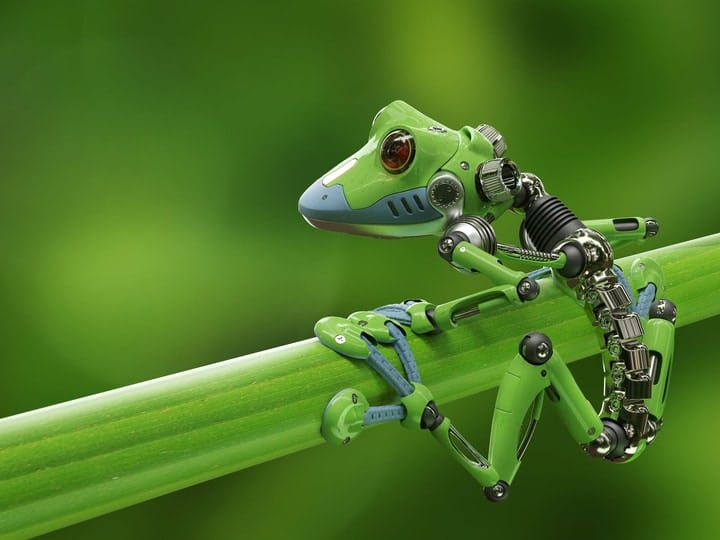
1. Plastic from bees
Northrop Grumman
For millions of years, natural selection has been shaping the animals and plants around us. It’s come up with solutions to almost every problem, and as a result, there are pretty darn amazing adaptations in nature. While we as humans have solved a lot of problems, there’s always new ones right around the corner. But scientists have been looking to nature to find solutions, and they’ve found the answers in biomimicry. Nature is inspiring solutions to all kinds of problems, from limiting dangerous microbes in hospitals to preventing athlete concussions. Nature is even offering ideas for how we can reduce our energy use and impact on the environment.
Australia hosts a lot of frightening animals, but one of its creatures may actually be very helpful: the masked bee. This bee, Hylaeus nubilosus, makes its nests out of a very particular material that acts like cellophane. The material is waterproof and fire resistant, but not toxic.
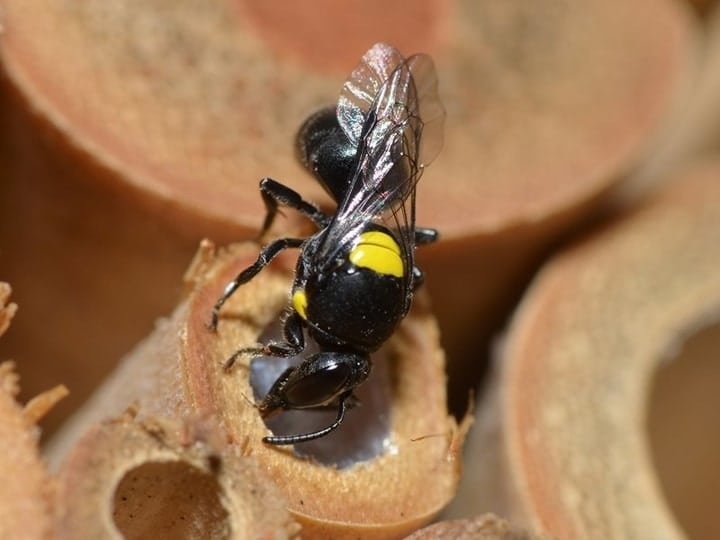
BowerBird
A New Zealand company, Humble Bee, wants to synthetically make this material as a substitute for plastic. But this isn’t the only time scientists saw nature do something amazing and decided to try and emulate it with new technology. Some old inventions that seem quite standard now were actually inspired by nature, but the inspiration continues for new technologies today.
2. Human shell
Turtles are known for their hard, protective shell. It covers their top and their belly. The shell is so imperative that it’s actually fused into their skeleton; in fact, the turtle shell actually evolved from their ancestors’ rib cage. EDAG, a German car company, is modelling one of their cars off a turtle’s shell.
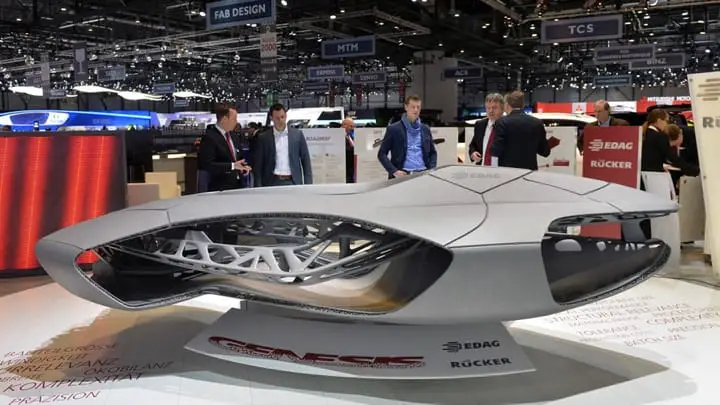
Autoblog
The vehicle is called “EDAG GENESIS” and so far it’s still just a concept, but they designed it to have a protective framework like the skeletal frame of a turtle’s shell. They used 3D printing to make it quite intricate and they’re designing it to increase passenger safety.
3. Bird beaked train
When Japanese engineers were designing their super fast bullet trains, one problem was keeping them from fully succeeding. While the trains were going fast enough, they made an absurdly loud shock wave in tunnels that could damage their structural integrity. The trains made so much noise because their blunt nose was displacing the air in front of them.
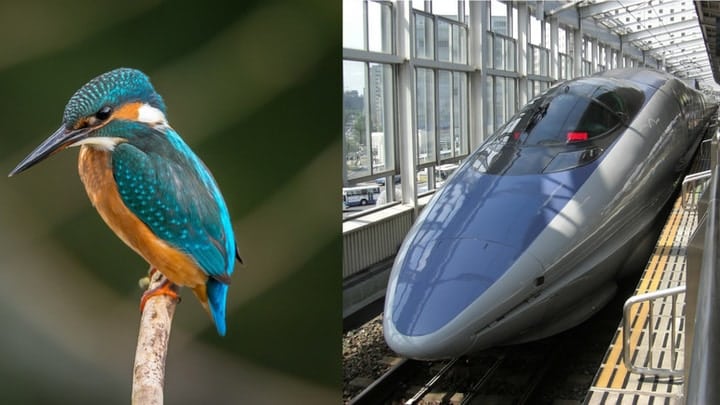
Scraplabs Blog
Looking to nature for inspiration, the engineers found the kingfisher bird. These birds dive headfirst into water to hunt their prey, but they make almost no splash at all because of the shape of their beak. So the train’s noses were modeled after the long narrow Kingfisher beak. Once they changed this, not only did the trains get quieter, but they got faster and used less electricity.
4. Hooks and loops
You probably don’t think much about velcro in your daily life, except when you’re in a quiet room and it makes that trademark screech, but it didn’t always exist. One day, the Swiss inventor George de Mestral was walking his dog when he noticed a lot of burrs stuck to his sock.
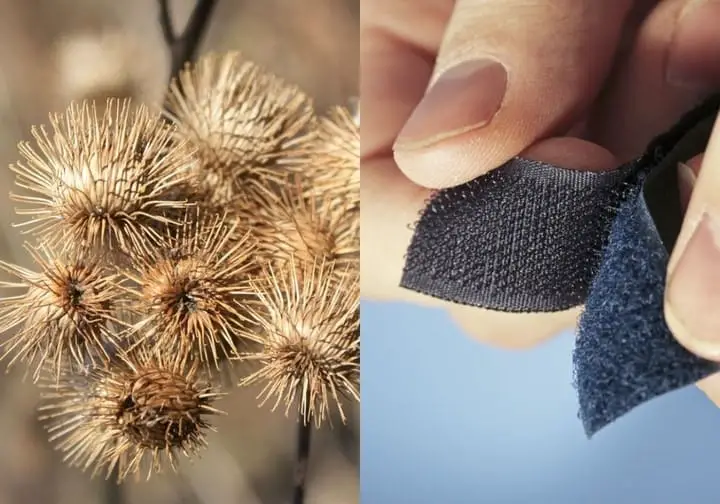
Mother Nature Network
Burrs are the seeds of the burdock plant and they have little tiny hooks that allow them to catch on fur and fabrics, which have loops. These hooks and loops sparked an idea in de Mestral and he invented Velcro. One side has hooks, the other has loops, and when they come together, they stick.
5. Upgrading solar power
Solar power is similar to plants, which use the sun to make their own energy, but researchers are actually looking to animals to improve it. One lab has focused on moths, which seem an unlikely inspiration since they mostly come out at night, but their adaptation to seeing in the dark could be energy saving.
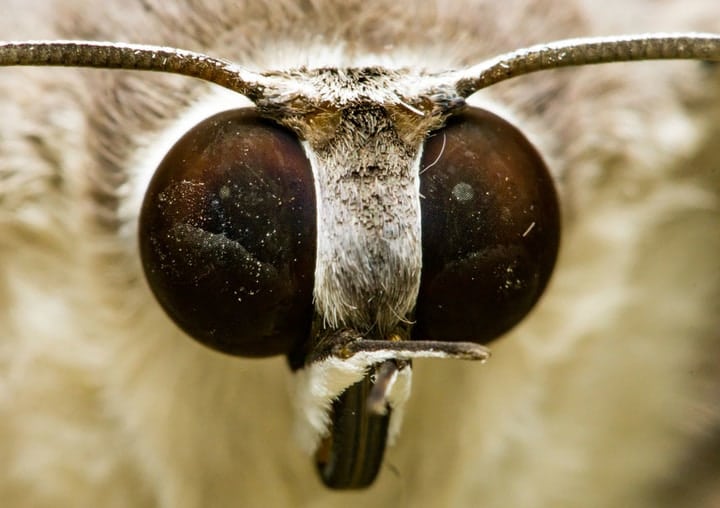
Discover Magazine Blogs
Moth eyes absorb a lot of sunlight, making them look black. Solar panels, meanwhile, reflect a lot of light that they could be using to make electricity. Solar cells are very smooth, while moth eyes are covered with tiny bumps. A group of researchers added similar little bumps to solar cells and found that they can absorb a lot more light that way. Plus, it makes them water repellent.
6. Swimming like a dolphin
While most of these bio-inspired inventions have a useful purpose, this new invention is just for fun. Imagine if a dolphin and a fighter jet had a baby, it would be the Seabreacher. Inspired by dolphins and sharks, this water vehicle aims to move just like them and it comes pretty darn close.
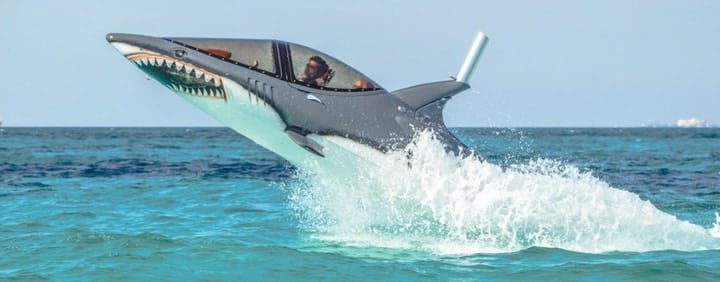
Lomas Travel
While the Seabreacher can’t go much more than five feet underwater, it does move faster than any dolphin can. Above water it can hit about 60 miles per hour, and below it can go 25 miles per hour. If a dolphin really tries, it could go 25 miles per hour, but it would be a sprint. The Seabreacher also does barrel rolls and breaching to mimic the playful whales.
7. Better sonar
While you might think that bats’ echolocation was the inspiration for sonar technology (because both use sound waves to locate objects), they actually weren’t. People made very early sonar technology before we even knew bats use echolocation to navigate in the dark. It took a lot of experimentation to learn of bats’ abilities.
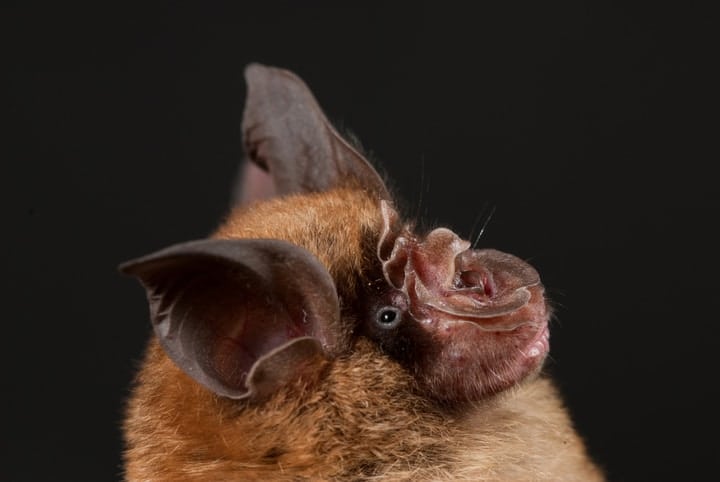
Medical Xpress
In 1906, six years before the Titanic sunk, Lewis Nixon invented the first sonar-like device to detect, of all things, icebergs. However, sonar wasn’t fully developed until after the Titanic sunk. It wasn’t until the 1930’s that scientists realized bats use a similar method. However, today researchers are taking cues from the winged animals to improve sonar technology.
8. Robot bat
Bats can learn a lot more than just an object’s location from echolocation, like distinguish a leaf from a moth’s wing. And while all bats use echolocation to find their food in the dark, horseshoe bats are particularly adept at it. So to improve current sonar technology, researchers have turned to these funny looking bats.
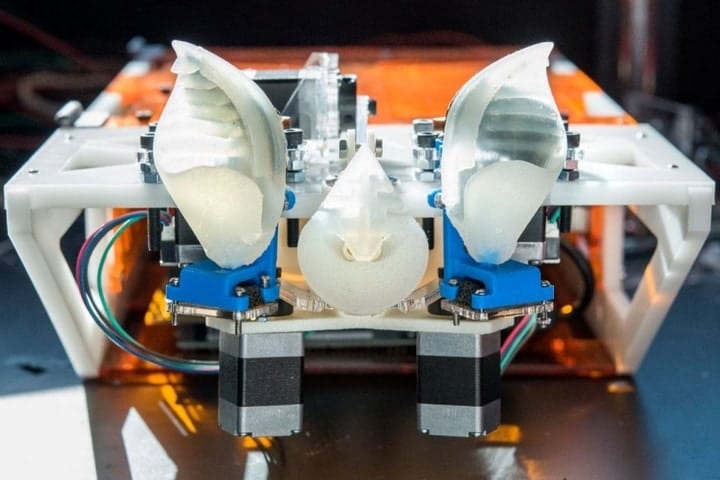
Virginia Tech
Horseshoe bats make sounds using their noses, which are intricately shaped and crazy looking, and then the echo comes back to their equally intricately shaped ears. So naturally, researchers used 3D-printed models of these facial features for use on a robot. The new parts improved the robot’s sonar abilities.
9. Shark skin
Sharks have been around for a long time, about 400 million years, which means they must be doing something right. While they have a ton of really cool adaptations, their skin is particularly interesting for biomimicry. Shark skin is made up of scales called denticles, which literally means “skin teeth.” As opposed to the smoother fish scales, shark denticles look like tiny teeth.
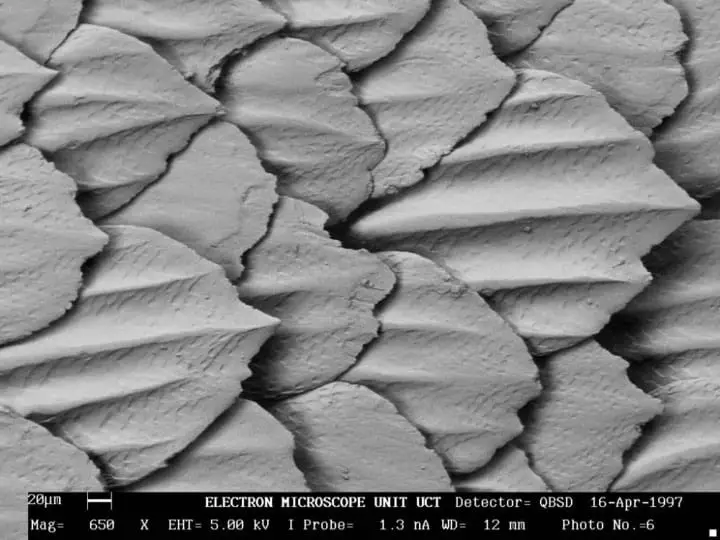
Smithsonian Ocean Portal
But they don’t look like this just for fun, they’re shaped to improve shark’s swimming. The denticles reduce drag, making sharks swim faster than if they didn’t have them. They also make low pressure zones next to the shark’s skin and create little swirling vortices. This effectively pushes sharks forward and reduces the amount of energy sharks need to swim. The folks over at Speedo tried to mimic this.
10. Speedo swimsuits
When it comes to competitive swimming, reducing drag is crucial to swimming as fast as possible. Swimmers shave their body hair and pick their swimsuit carefully to get the least amount of resistance. Speedo took inspiration from shark skin and made their Fastskin swimsuits to try and mimic it.
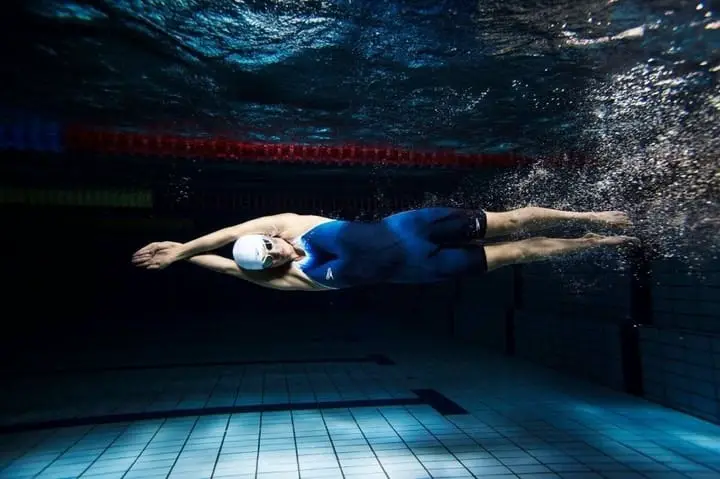
Pinterest
But while Fastskin swimsuits do increase a swimmer’s speed, they don’t actually do it like shark denticles do. Instead, their tightness makes swimmers more streamlined and they’re especially buoyant. While this shark skin inspired technology isn’t really working how it was intended, another innovation based on sharks is promising life-saving results.
11. Sharks in hospitals
Unlike whales, boats and other large things in the water, sharks don’t “biofoul” which means they don’t acquire unwanted passengers like barnacles and algae. Their denticles actually repel biofoul because it’s very hard for things to attach to their diamond shape, which inspired one company to make a bacteria-repelling material called “Sharklet.”
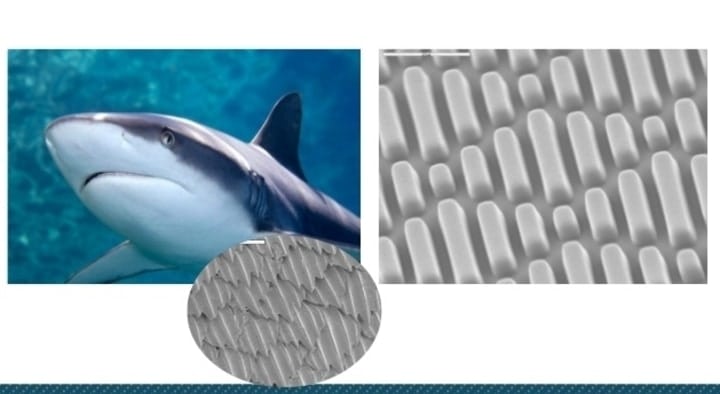
SlideShare
Sharklet has a raised diamond micropattern that makes it too difficult for bacteria to colonize, so it’ll be perfect for making hospitals cleaner. It can be used on all kinds of surfaces, like door knobs, buttons, and even inside tubes. While antibiotic resistance is leading to superbug infections, Sharklet can reduce bacteria without even using antibiotics.
12. Tiny robots
While Sharklet is trying to keep the tiny stuff out of you, other researchers are designing a tiny medical robot to put in your body. It’s inspired by sea lamprey, which look like a cross between a demon fish and a huge worm, because of their simple nervous system.
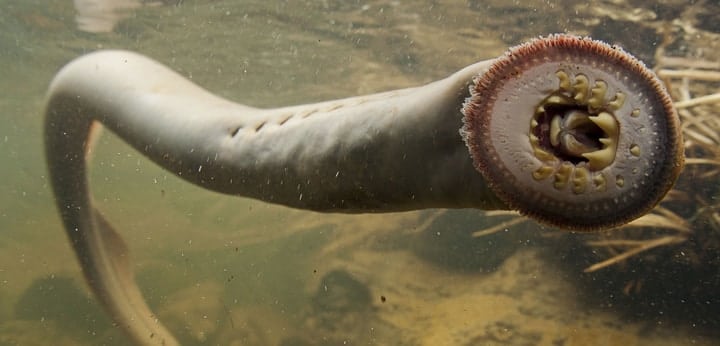
Hakai Magazine
In theory, the little robot will swim around in your body like a living creature, sensing its surroundings. They want it to find tumors, blood clots, and other disease indicators. Like living animals, its artificial muscles will be powered by glucose. Of course, people may not actually want this robot in their body at all.
13. It’s a bird, it’s a plane
Perhaps one of the most obvious cases of biomimicry is the airplane. People looked at birds and thought, “I wanna do that,” and thus airplanes were born. After some trial and error, of course. The first flying machines looked more like birds than the metal machines do now.

Travel + Leisure
Leonardo da Vinci designed a flying machine that flapped its wings and had a tail, but it didn’t work all that well. People improved upon that design, creating the airplane wing which still works similarly to a bird’s. The curved wing shape pushes air down and the plane (or bird) up. But the plane’s wing isn’t exactly like a bird’s and people are trying to change that.
14. Even more bird-like
Some researchers are looking to make plane wings even more similar to birds’. Airplane wings are rigid and maintain the same shape throughout their whole flight, but birds change their wings to suit whether they are lifting off, cruising, or landing. This adjusting increases birds’ efficiency, but planes aren’t as efficient as they could be.
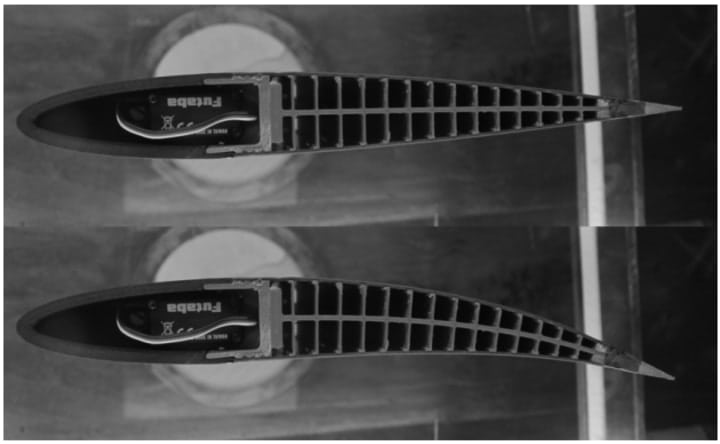
MDPI
The researchers have developed a prototype for a “morphing wing” that actually moves the edge of the wing, adjusting to different conditions. The morphing wing could increase lift and reduce drag. It works because of smart materials, which use electrical signals to morph the wing. While this new addition was influenced by birds, one researcher is actually looking to make airplanes mimic frogs.
15. It’s a frog, it’s a plane?
While on vacation in Panama, engineering professor Konrad Rykaczewski found inspiration for airplane safety in the most unlikely of creatures: poison dart frogs. He learned about how these frogs have two layers of skin, the second of which stores poison that it releases to the top layer when needed.

KLM Blog
Rykaczewski had been researching methods to keep ice off of airplane wings. When ice forms on the wings, it changes their shape and can actually cause the plane to crash. Currently, we avoid this by showering planes in antifreeze before lift off. However, antifreeze is expensive and not environmentally friendly.
16. Antifreezing skin
Inspired by the lotus leaf, which repels water, Rykaczewski thought he could make a coating for airplanes that would be entirely water resistant. However, this would only work for large water droplets like rain and not things like mist. It would reduce ice formation, but couldn’t block it completely.
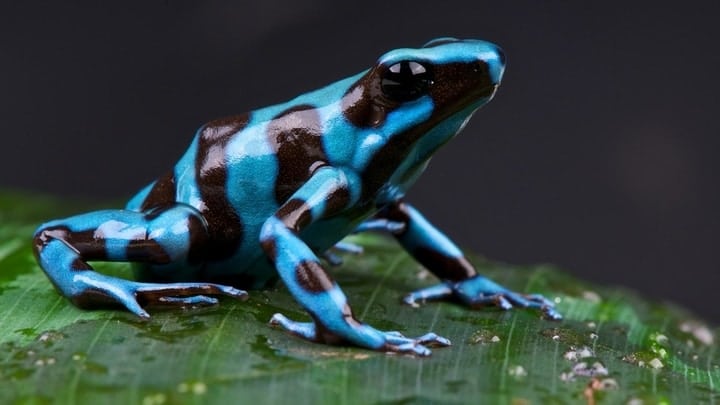
National Geographic Kids
So when he learned about poison dart frog skin, he had the idea to apply that principle to airplanes. He’s researching how to give airplanes two skins: the top layer would be water resistant like a lotus leaf, while the bottom layer would have antifreeze that could be released to the top when needed.
17. Helicopter flight
While birds may have served as inspiration for airplanes, another flying animal influenced the invention of helicopters: dragonflies. With their gleaming wings and bodies, dragonflies zip around their air with ease. Helicopters can fly in pretty much any direction and have more maneuverability than airplanes, just like dragonflies.
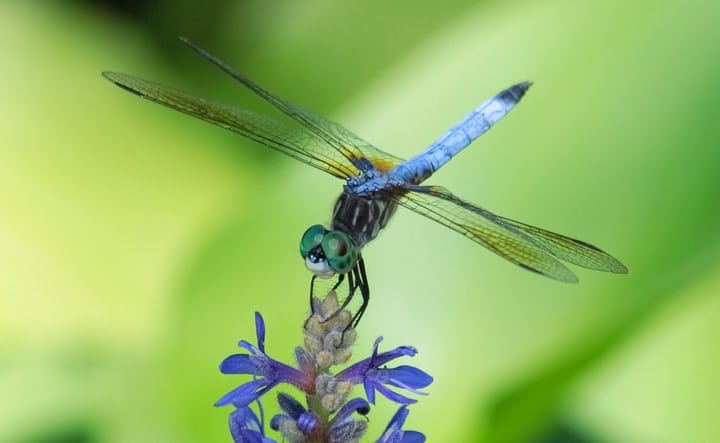
AnimalSake
Helicopters work by tilting their blades to lift up and they can tilt them in a variety of directions. Dragonflies also tilt their wings to move through the air. However, helicopters aren’t as versatile at landing and lift off as dragonflies. Inventors are turning again to the winged insects to solve this problem.
18. New legs for helicopters
While helicopters are very versatile in the air, they aren’t flexible when it comes to land. Dragonflies can take off and land on a lot of different types of surfaces, from rough rocks to tiny twigs. In contrast, helicopters only do so on flat surfaces with very little incline. This can be very inconvenient for the pilot.
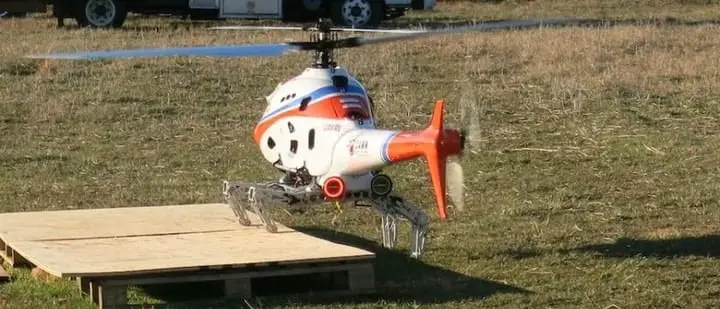
Engineers Australia
Researchers have come up with dragonfly inspired legs to replace helicopters’ rigid base. The legs are jointed and adjust to different surfaces to keep the top of the helicopter level. Ideally, this will let helicopters land in a lot of new places. As for the helicopters’ blades, another animal has inspired improvements for them and other fan-like technology.
19. Humpback whales ruin fluid dynamics
While perusing a gift shop, scientist Frank Fish saw a humpback whale sculpture with bumps on the leading edge of its flippers. He thought that was wrong, the whale should have them on the opposite side, but the shop manager and a fact check proved the sculpture to be right.
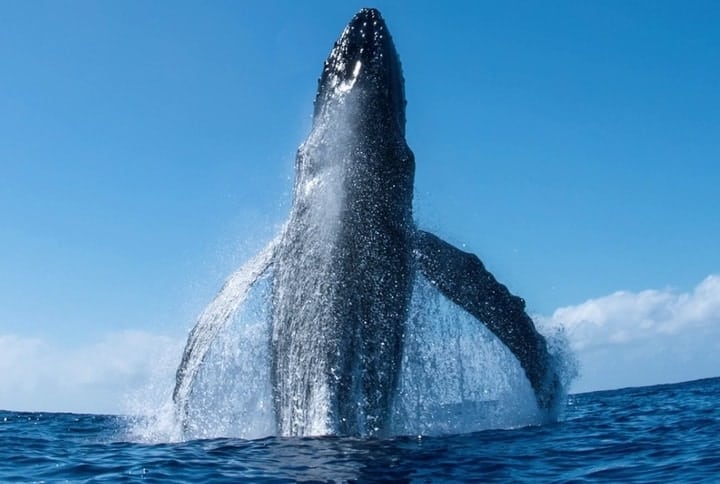
YouTube
Up to this point, fluid dynamics scientists thought the most efficient wings or fan blades had to be smooth on the leading edge (the side that first hits air or water). But what Fish observed challenged this whole paradigm, and so he went headfirst into researching it and developing new technology based on whale flippers.
20. Agile giants
Despite their size, humpback whales are very agile underwater and can even jump about 45 ft into the air, an act called breaching. While some people are researching how they breach to communicate with other whales, others are researching how they accomplish such a feat in the first place.
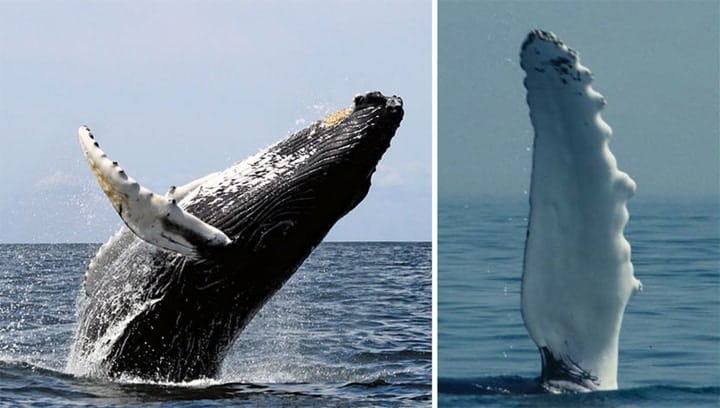
Journal of Fluids Engineering
Frank Fish noticed that wave-like bumps called “tubercles” line the edge of a humpback’s flipper, and he hypothesized that these help lift the whale. While running tests on mock flippers to see how the tubercles affect water (or air) running over a flipper, Fish found something compelling enough to start a new company: WhalePower.
21. WhalePower
Frank Fish discovered that on either side of a whale’s tubercle, the water forms a spinning vortex. So when water flows over the tubercle, it is accelerated by the vortices on either side. This works on other types of tubercles, too. WhalePower added similar tubercles to wind turbine blades, which became more durable and quieter.
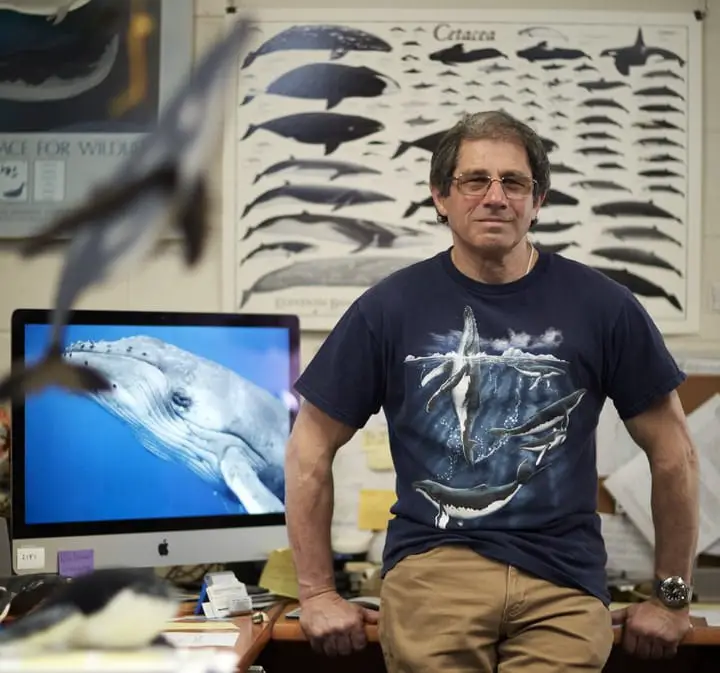
EPO
Also, with the bumps, the wind turbines get more energy from slower winds and work better in high speed winds. When industrial ceiling fans get tubercles, they work more efficiently and circulate air better. WhalePower is working on applying tubercles to a lot of fan-like technology, like computer and engine cooling fans.
22. Slosh in the head
Concussions are the dark side of popular sports like football. The repeated hard hitting knocks the players’ brains around in their skulls, making the brain “slosh.” And while there is some fluid around the brain, the brain cavity isn’t completely filled. This leaves the brain wide open for injury.

1A
However, there are some animals that take a lot of force to the head, so why don’t they deal with consistent concussions? Researchers found the answer and developed something to protect athlete’s brains from traumatic brain injury. Woodpeckers and sheep may just be the key to saving athletes from brain damage.
23. Animal brains
Animals like woodpeckers and rams do just fine with much more force hitting their heads than humans. Head ramming sheep hit into each other’s heads at about 500 g. “G” is the unit of g-force, which is when something accelerating in one direction experiences a force in the opposite direction. 1 g is equal to the pull of Earth’s gravity.

Cunningham Outdoors LLC
Our heads normally deal with less than 8 g, but during a football game a player’s head can experience anywhere from 10 to 300 g of force. A woodpecker, however, hits its head into wood with 1200 g about 1200 times a day. Humans get symptoms of concussions around 50 to 150 g. So what are rams and woodpeckers doing right?
24. Full containers
Woodpeckers and sheep have evolved to be able to repeatedly hit their heads with a lot of force. It all comes back to that fluid around your brain. When a container, like the brain cavity, is only mostly filled with fluid, it absorbs energy when knocked around and shaken. This energy then builds up and damages the brain.
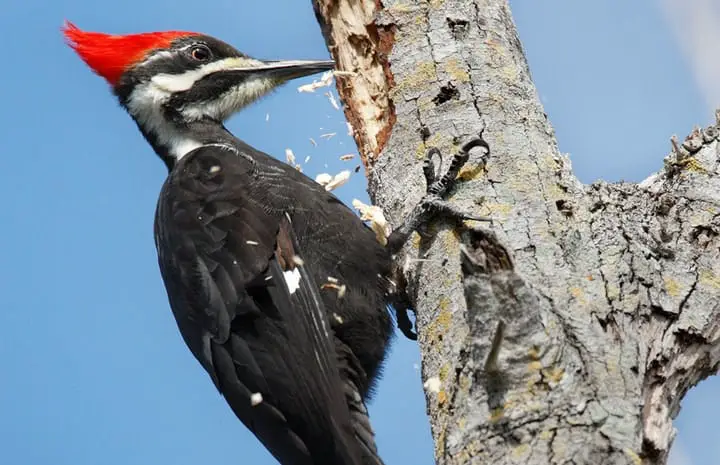
National Audubon Society
However, when a container is completely filled, it doesn’t absorb as much energy because there is nowhere for it to go. Woodpeckers and head ramming sheep have a muscle that applies pressure to their jugular veins, and like a kink in a garden hose, this fills up the rest of their brain cavity with fluid. In fact, you have a very similar muscle.
25. Right in the jugular
All vertebrates, every animal with a backbone, have the muscle that woodpeckers and rams use to protect their brain. However, since we didn’t evolve to play football and bang our heads together, ours is only used when we yawn. But David Smith at Cincinnati Children’s Hospital created a new technology to mimic the pressure on the jugular.
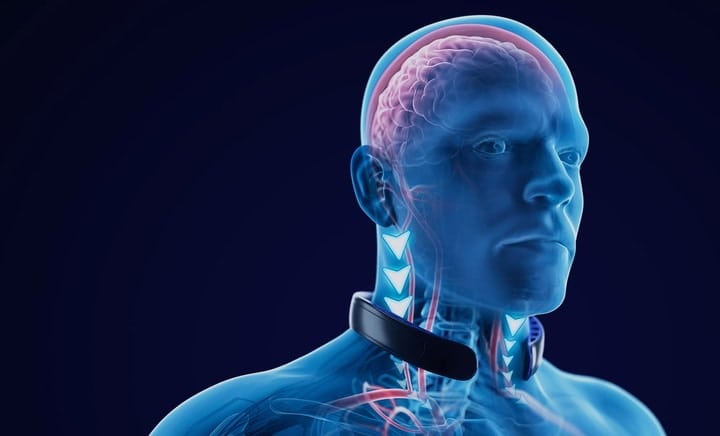
Digital Trends
The Q-collar is a C shaped collar that goes around a player’s neck and lightly adds pressure to their vein, causing more fluid to build up around the brain, while letting blood still flow as it needs to. Their research has shown this collar can protect athletes from brain injury, but it still requires some more testing.
26. Bullitt Center
Instead of just one animal or plant, buildings can be modeled after entire ecosystems. The Bullitt Center in Seattle mimics a forest in how it makes energy, regulates temperature, and deals with waste. For example, the building’s internal workings collect all the human waste and compost it in the basement like how dead leaves would be used by critters.

ArchDaily
The building also has solar panels on the roof, which generate all the energy needed by the occupants of the office building, like how trees use leaves to make their food. There are even small spaces between some of the solar panels, to mimic how light filters through a forest canopy.
27. Living buildings
The Bullitt center took further steps to be sustainable and eco-inspired. In order to regulate its temperature and minimize energy use on heating or A/C, the Bullitt Center reads data from a weather vane across the street. It uses this information to know when to open windows or lower the blinds, to cool off or warm up as needed.

Luma Lighting Design
But deeper, in the building’s roots, it has geothermal wells. These wells go 400 feet into the ground and move water through them. The water’s temperature changes and this in turn alters the temperature of the building. They can alter the direction of the water to make the building hotter or colder.
28. Cat tacks
While the original thumbtack was not inspired by nature, as far as we know, a new and safer version was. Most people have accepted that thumbtacks can give you an annoying prick and that reaching into a container of them is just a little dangerous, but Toshi Fukaya did not.
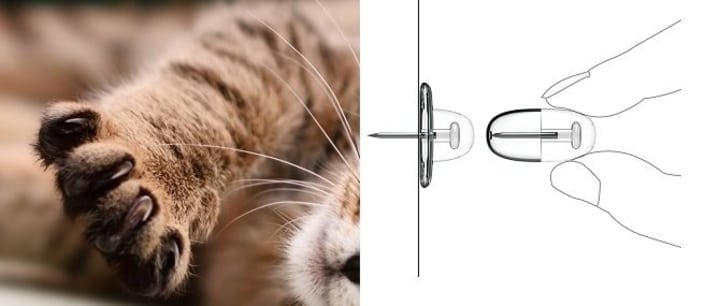
Pinterest
Fukaya invented a new thumbtack. The inspiration? Cats. They don’t walk around with their claws out all day, but instead unsheathe them only when they need to. Fukaya mimicked this and made a thumbtack that remains sheathed until used on a hard surface. Now you won’t get poked by the pesky thing.
29. Fishy safety
While a thumbtack prick is mostly just annoying, other sharp things can be far more painful. Safety gloves are largely made of Kevlar, which is great at protecting against knife cuts, but not so good at protecting against stabbing things like nails. The problem is that safety gloves have to protect and be flexible at the same time.
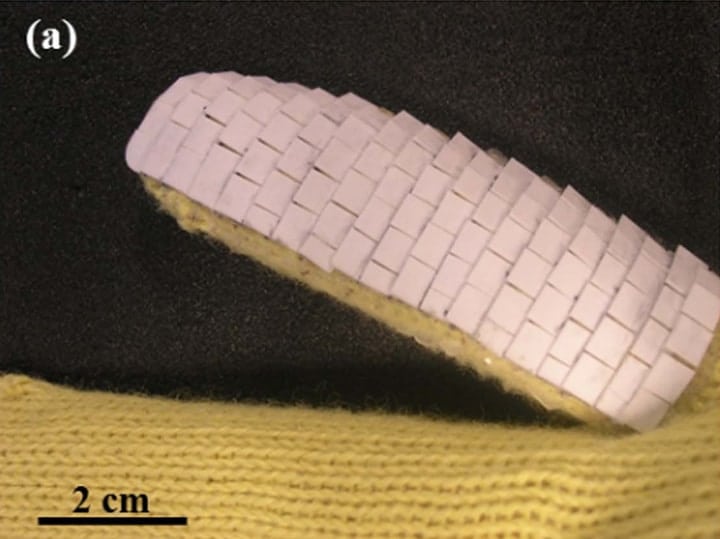
3D Printing Industry
One researcher is trying to improve safety gloves by making them even safer, but keeping the flexibility. He looked to fish scales and 3D printed a protective layer of little ceramic tiles to attach to a glove. When his finger was covered with the “scales” it couldn’t be punctured by a nail. And as the scales get smaller, the amount of force needed to penetrate them increases.
30. Innovations
While we are a relatively young species, only about 200,000 years old, most other species on Earth have spent a lot longer evolving amazing adaptations. Natural selection has shaped animals and plants to do what they need to do to survive, and humans have taken a few pointers from our neighbors.

Northrop Grumman
Nature has given us the tools and ideas to save lives, have fun, and be efficient. Most likely, scientists will continue to research biomimicry and innovate far into the future. And while nature takes a lot longer to innovate, we will surely keep finding new inspiration in its old inventions.